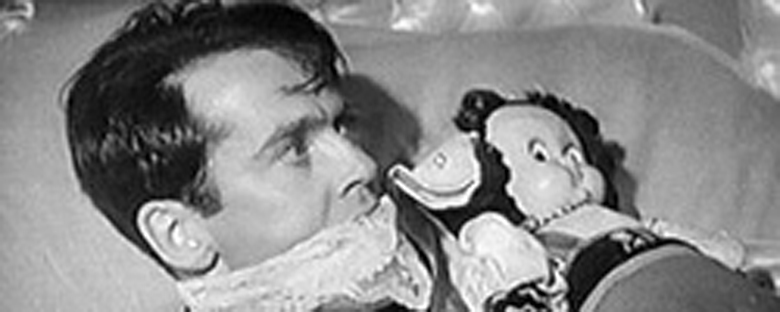Reviews
Leigh Jason
USA, 1938
Credits
Review by Matt Bailey
Posted on 05 November 2004
Source Turner Classic Movies broadcast
It is a given with genre films that they rely on archetypes to facilitate narrative. In romantic comedies, you get the irascible male and the kooky but loveable female. In horror films, you get the brilliant but mad villain and the plucky heroine. In adventure films, you get… well… everything that was in all those Lord of the Rings movies. In The Mad Miss Manton, a forgotten but actually quite good romantic comedy/mystery hybrid made by RKO in 1938, you hit the archetype jackpot. The mad Miss Manton of the title is the preposterously-named Melsa Manton, your garden variety wacky socialite (think Katherine Hepburn’s Susan from Bringing Up Baby). Her leading man is the ambitious, scoop-hungry newspaper man, Peter Ames. We’ve also got a dyspeptic police inspector, his bumbling subordinate, a gaggle of giggly debutantes, and a killer driven mad by love.
Stocking a film with archetypes (or, at some points, stereotypes) frees the film from having to construct characters and backstories. The audience simply recognizes the participants in the drama as stock characters and relaxes to watch what is, essentially, variations on a theme. We know that in romantic comedies the two leads, no matter how much they bicker, will end up in bed or married by the end of the film. We know in murder mysteries that the killer, no matter how brilliant or elusive, will get his comeuppance. We don’t wait on the edge of our seats for the denouement because we know how it will play out. What we are interested in is the ways in which the film takes its generic elements and tweaks them into something familiar yet novel.
The Mad Miss Manton succeeds as a romantic comedy more than it succeeds as a mystery. The chemistry between stars Barbara Stanwyck and Henry Fonda is exhilarating, prefiguring their more famous pairing in 1941’s The Lady Eve. The audience is expected to believe that their two characters despise each other even before they’ve met (their brilliant “meet cute” scene has Stanwyck’s Manton storm into Ames’ office, slap a man, and then ask if he is Peter Ames. Alas, the poor man is not). Of course, we are never fooled by this. It’s clear from the moment he sees her that Ames is over the moon for Manton, though she requires a bit more convincing.
The murder mystery itself is something of a spoof of films of that ilk that were so popular at the time. The 1930s had films featuring teenagers, schoolmarms, inscrutable Chinamen, madcap married couples, and a host of other unlikely characters investigating mysterious occurrences. Manton investigates the murder she thinks she witnessed with no less than seven of her socialite friends. A rich vein of comedy is mined simply by having the gang snoop around in spooky houses wearing floor-length ball gowns and fur stoles.
Even though the film relies heavily on archetypes, room is made for the comedic exploration of character traits of some of the supporting characters. Pat, one of the socialites, is always eating and just has to have a sandwich, even when investigating a murder in a stranger’s house. Another of the socialites, Dora, is always on the alert for Bolshevik tendencies among her peers. One sassy exchange of dialogue between her the others goes:
Melsa : Helen, you search the upstairs. Helen : Oh, no! I was never much of an individualist. If the upstairs has to be searched, we’ll search it together. Dora : Why, that’s communism!
I caught this film, almost purely by chance, on Turner Classic Movies. To me, the genius of TCM is not in its repetition of the vast cannon of received classics, but in the broader sense they provide of the true output of Hollywood’s classic era. Just as a diet consisting solely of caviar and champagne would soon become nausea-inducing, TCM cannot be expected to play the hits of Hitchcock and Welles over and over again. In the wee hours of the night, there are gems like The Mad Miss Manton to be found. Many are the laughs I have had watching utterly forgotten comedies that aired at 6:00 AM, and I have had just as many thrills watching the strange 55-minute thrillers that fill up the programming hours on TCM in the early afternoons. Even though they might not appear in your Leonard Maltin or Video Hound, these “lost” films are often more gratifying than the films that have attained the status of a classic. I have long been of the opinion that studying film should require not only watching the best cinema had to offer, but also its mediocrities and lesser-known output. Turner Classic Movies has been providing me with just such a 24-hour film class for years, and I have learned more about movies from watching this channel than I ever learned in film school.
We don’t do comments anymore, but you may contact us here or find us on Twitter or Facebook.



